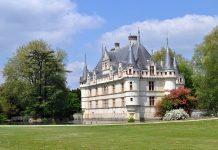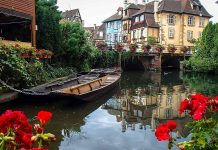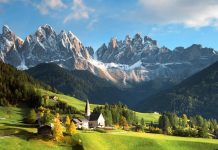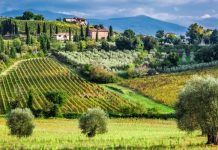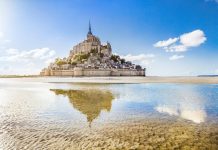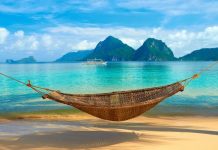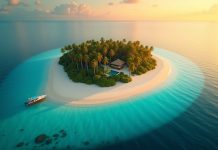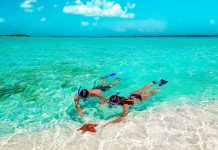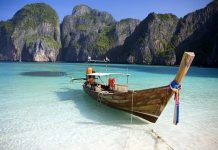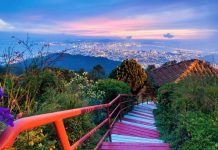
Alaska: Northern Lights, Glaciers & The Last Frontier
Alaska, often referred to as “The Last Frontier,” is a land of breathtaking natural wonders, rugged wilderness, and awe-inspiring landscapes. From the dancing colors of the Northern Lights to the towering glaciers that carve through its mountains, Alaska offers an unforgettable adventure for nature lovers, thrill-seekers, and those looking to escape into the wild.
In this guide, we’ll explore the best of Alaska—its mesmerizing auroras, majestic glaciers, and the untamed spirit of America’s largest and most remote state.
1. The Magic of the Northern Lights in Alaska
One of the most spectacular natural phenomena on Earth, the Aurora Borealis (Northern Lights) illuminates Alaska’s night skies with vibrant hues of green, pink, and purple. This celestial light show occurs when charged particles from the sun collide with Earth’s atmosphere, creating an ethereal glow.
Best Places to See the Northern Lights in Alaska:
- Fairbanks: Located under the Auroral Oval, Fairbanks offers some of the best and most frequent Northern Lights sightings.
- Denali National Park: Far from city lights, the park provides a pristine backdrop for aurora viewing.
- Coldfoot (Above the Arctic Circle): A remote outpost with minimal light pollution, perfect for aurora chasers.
- Anchorage (on clear nights): While less predictable, strong displays can sometimes be seen here.
Best Time to See the Aurora:
The Northern Lights are visible from late August to mid-April, with peak activity between December and March. For the best experience, head to a dark location between 10 PM and 2 AM on clear, cold nights.
2. Alaska’s Majestic Glaciers: Ice Giants of the Last Frontier
Alaska is home to over 100,000 glaciers, covering nearly 5% of the state. These massive rivers of ice shape the landscape, creating fjords, icebergs, and stunning blue ice caves.
Must-See Glaciers in Alaska:
A. Mendenhall Glacier (Juneau)
- Located just 12 miles from downtown Juneau, this glacier is easily accessible.
- Explore the Mendenhall Ice Caves (when stable) for a surreal blue-hued experience.
- Hike the Nugget Falls Trail for a close-up view of the glacier and a powerful waterfall.
B. Hubbard Glacier (Near Yakutat)
- One of the most active tidewater glaciers, constantly calving massive icebergs.
- Best seen on a cruise through Disenchantment Bay.
C. Matanuska Glacier (Near Anchorage)
- Alaska’s largest road-accessible glacier (about 2 hours from Anchorage).
- Offers guided ice climbing and trekking tours.
D. Exit Glacier (Kenai Fjords National Park)
- One of the few glaciers you can walk right up to.
- Trails range from easy walks to strenuous hikes for panoramic views.
How to Experience Alaska’s Glaciers:
- Glacier Cruises: Take a boat tour in Prince William Sound or Kenai Fjords to see calving glaciers.
- Helicopter Tours: Land on a glacier for an unforgettable trek (try Denali or Juneau tours).
- Dog Sledding on a Glacier: A unique Alaskan adventure (available in Juneau and Girdwood).
3. The Last Frontier: Alaska’s Wild & Untamed Spirit
Alaska’s nickname, “The Last Frontier,” reflects its vast, untouched wilderness. With more than half of America’s national park land, Alaska is a paradise for adventurers.
Top Wilderness Experiences in Alaska:
A. Denali National Park
- Home to Denali (Mount McKinley), North America’s tallest peak (20,310 ft).
- Spot grizzly bears, moose, caribou, and wolves in their natural habitat.
- Take the Denali Park Road (only accessible via shuttle or tour bus).
B. Kenai Fjords National Park
- Where mountains meet the sea, with glaciers, whales, and puffins.
- Don’t miss the Harding Icefield Trail for epic glacier views.
C. Wrangell-St. Elias National Park
- The largest national park in the U.S., bigger than Switzerland!
- Explore abandoned mining towns and massive icefields.
D. The Alaska Highway & Dalton Highway
- Road trip through some of the most remote landscapes in North America.
- The Dalton Highway (Haul Road) leads to the Arctic Ocean.
Wildlife Watching in Alaska:
- Bears: See grizzlies at Katmai National Park or black bears in Tongass.
- Whales: Humpbacks and orcas frequent Sitka, Juneau, and Seward.
- Moose & Caribou: Common in Denali and along highways.
Final Thoughts: Why Alaska Should Be on Your Bucket List
Alaska is more than just a destination—it’s an experience of a lifetime. Whether you’re chasing the Northern Lights, trekking across ancient glaciers, or exploring the raw beauty of The Last Frontier, Alaska promises adventure at every turn.
Best Time to Visit:
- Summer (June-August): Best for hiking, wildlife, and glacier tours.
- Winter (December-March): Ideal for Northern Lights, dog sledding, and snow sports.
Travel Tips:
- Dress in layers—Alaska’s weather changes rapidly.
- Book tours early, especially for cruises and glacier landings.
- Rent a car for flexibility in exploring remote areas.


